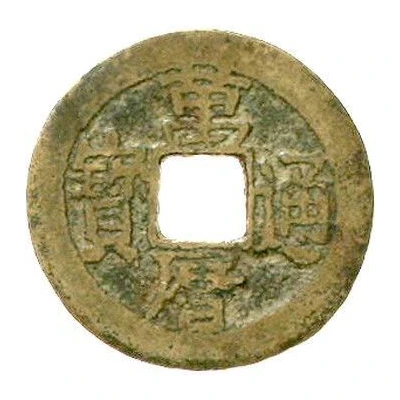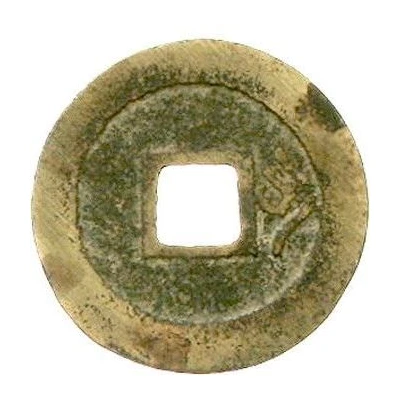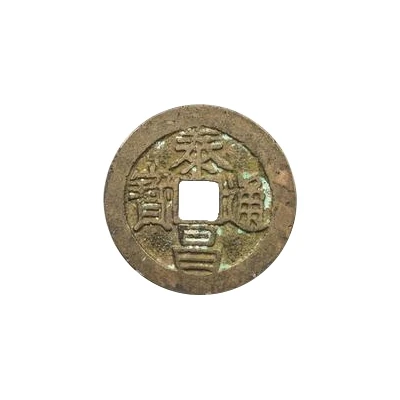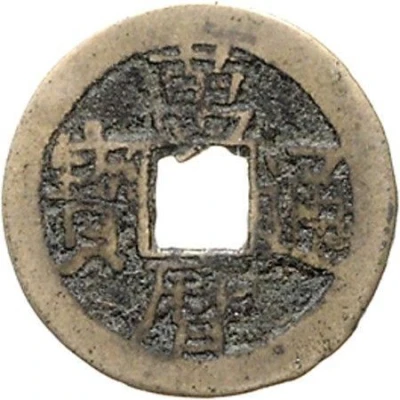
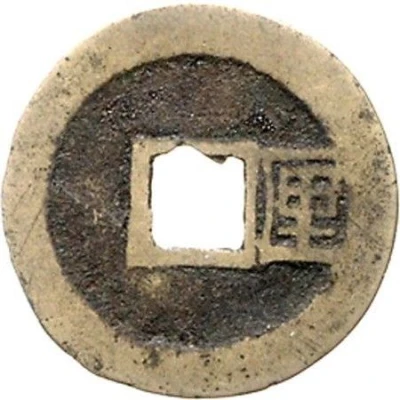

© Teutoburger Münzauktion
1 Cash - Wanli Tongbao; small size; with Li ND
| Brass | 1.50 g | 22 mm |
| Issuer | Empire of China |
|---|---|
| Emperor | Ming dynasty › Wanli (明神宗) (1572-1620) |
| Type | Standard circulation coin |
| Years | 1576-1620 |
| Value | 1 Cash |
| Currency | Cash (621-1912) |
| Composition | Brass |
| Weight | 1.50 g |
| Diameter | 22 mm |
| Shape | Round with a square hole |
| Technique | Cast |
| Orientation | Medal alignment ↑↑ |
| Demonetized | Yes |
| Updated | 2024-10-04 |
| Numista | N#222260 |
|---|---|
| Rarity index | 100% |
Reverse
One Chinese ideogram to the right.
Script: Chinese (traditional, regular script)
Lettering: 厘
Translation:
Li
Weight?
Edge
Plain
Comment
These pieces are official issues, but while they are much smaller than regular issues, they are considered to be 1 Cash pieces. The exact purpose of these pieces is unclear.While casting was stopped at the last emperor's death in 1572, it was resumed again in 1576 at the Peking and Nanking mints. Soon after, mints in Yunnan, Shanxi, Shandong, Henan, Shaanxi, Jiangxi, Fujian, and Huguang were also opened. However, due to poor circumstances, the Wanli coins were a failure, and by 1582, all mints except for Huguang closed. There was an attempt to open mints in 1599, including opening a Board of Works in Nanking, although so many coins were produced there that casting was cut back, and other mints were closed.
Interesting fact
One interesting fact about the Wanli Tongbao coin is that it was produced during a time of great economic growth and cultural flourishing in China, known as the "Prosperous Age of Wanli" (1572-1620). This period saw significant advancements in agriculture, industry, and trade, which led to an increase in the production of coins and other forms of currency. The Wanli Tongbao coin, with its small size and brass composition, was likely used for everyday transactions and reflects the economic and cultural developments of its time.
